 "ttyymmnn" (ttyymmnn)
"ttyymmnn" (ttyymmnn)
05/15/2015 at 10:05 • Filed to: planelopnik, planelopnik history
 3
3
 14
14
 "ttyymmnn" (ttyymmnn)
"ttyymmnn" (ttyymmnn)
05/15/2015 at 10:05 • Filed to: planelopnik, planelopnik history |  3 3
|  14 14 |
This is today’s Planelopnik History Speed Round , getting you caught up on milestones and important historical events in aviation from May 13 through May 15.
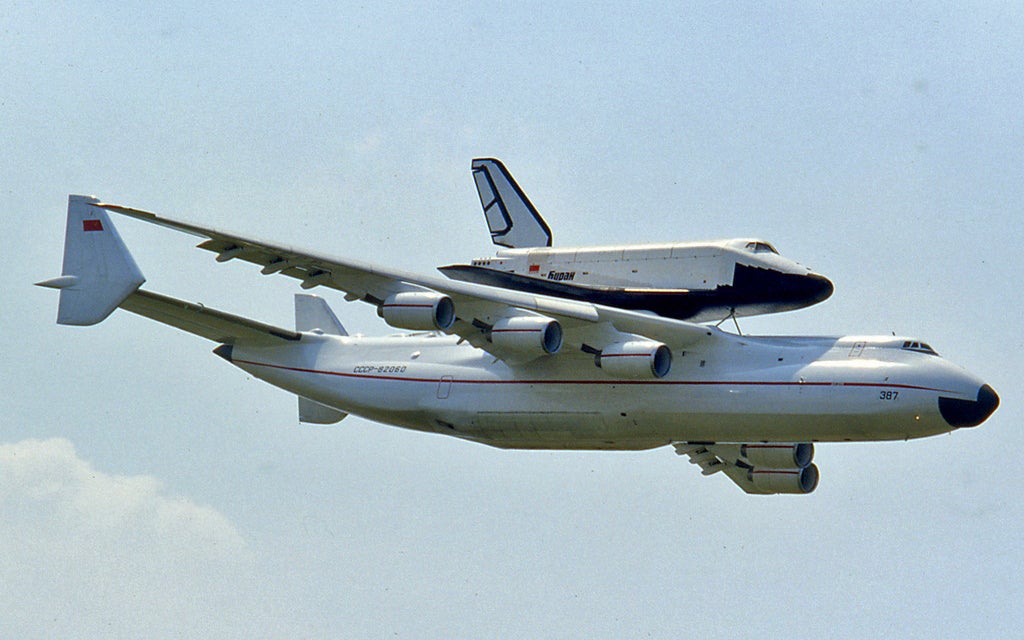
May 13, 1989 – The Antonov An-225 Mriya makes its first flight carrying the Buran reusable orbiter. The Soviet !!!error: Indecipherable SUB-paragraph formatting!!! ( Snowstorm or Blizzard ) was a reusable spacecraft designed to function in the same fashion as the American Space Shuttle. But unlike the American Shuttle, the Energia rocket used as a launch vehicle was not recovered and reused. Buran flew only one unmanned mission in 1988 before it was canceled in 1993 following the dissolution of the Soviet Union. The An-225 was designed in part for the task of returning the Buran to its launch site, and is still the largest plane in operation today. Before the Mriya was ready, Buran was transported by the !!!error: Indecipherable SUB-paragraph formatting!!! .
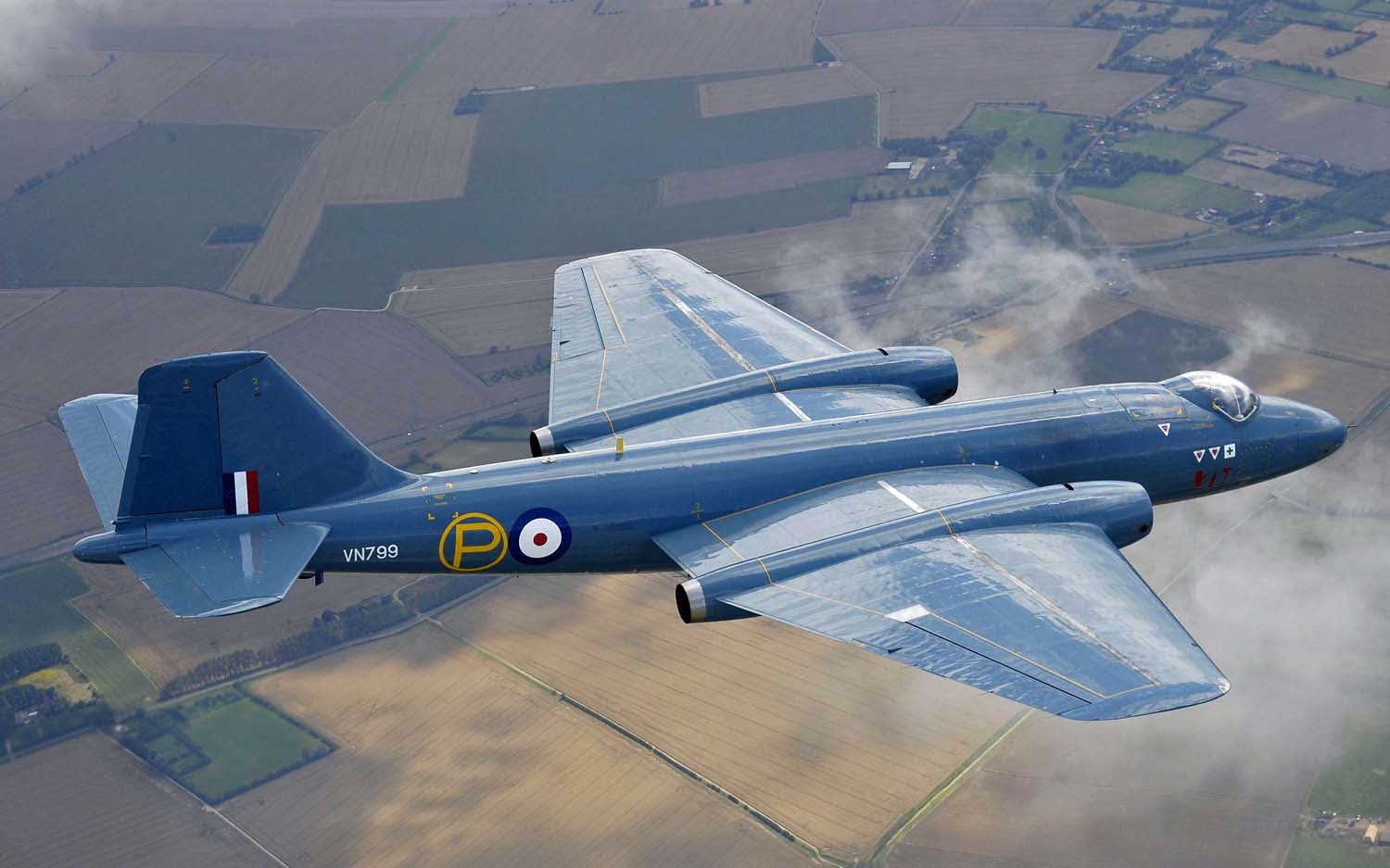
May 13, 1949 – The first flight of the English Electric Canberra.
The Canberra found its beginnings in a requirement for a high-speed, high-altitude bomber to replace the de Havilland Mosquito. As a result, the Canberra followed the design ethos of the Mosquito: put two of the most powerful engines available in the most aerodynamic airframe possible yet still provide an effective bomb load. The Canberra could fly higher than any other bomber through the 1950s, and set a world altitude record of 70,310 ft in 1957. Although envisioned as a nuclear bomber, the Canberra also served as a tactical bomber and reconnaissance aircraft, and many variants were produced for a multitude of mission profiles. The RAF retired the last of its Canberras in 2006 after 57 years of service.
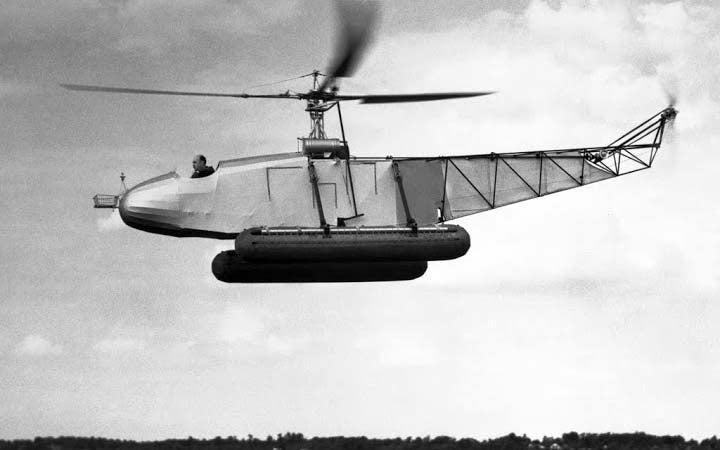
May 13, 1940 – The Sikorsky VS-300 makes its first untethered flight.
Igor Sikorsky’s quest for a viable rotorcraft lead to the development of the VS-300 in 1938. Sikorsky had particular difficulty figuring out a system for
!!!error: Indecipherable SUB-paragraph formatting!!!
control, so as a safety measure, he undertook a series of tethered flights to iron out the details of the control system. Once solved, Sikorsky untethered the helicopter and achieved completely controlled flight. The VS-300 became the first single lifting-rotor helicopter in the US, and the first successful helicopter to use a single vertical tail rotor. The VS-300 was also the first to employ a single engine to power both rotors. The control system devised by Sikorsky is still in use today.
(Above: Igor Sikorsky at the controls of his VS-300)
May 14, 2013 – Northrop Grumman’s X-47B performs the world’s first catapult launch of an autonomous aircraft.
In 2000, the Navy committed to the development of an Unmanned Combat Air System (UCAS) and awarded contracts for demonstrator aircraft to Boeing and Northrop Grumman. After its first launch from the USS
George H.W. Bush
(CVN 77), the X-47B performed the first autonomous touch-and-go landings three days later and the first arrested carrier landing on July 10. The X-47B also demonstrated autonomous aerial refueling in April of 2015. The X-47 program has finished, and the Navy plans to open the competition for a deployable fleet of Unmanned Carrier-Launched Airborne Surveillance and Strike (UCLASS) aircraft in 2016, with regular operations beginning in 2020.
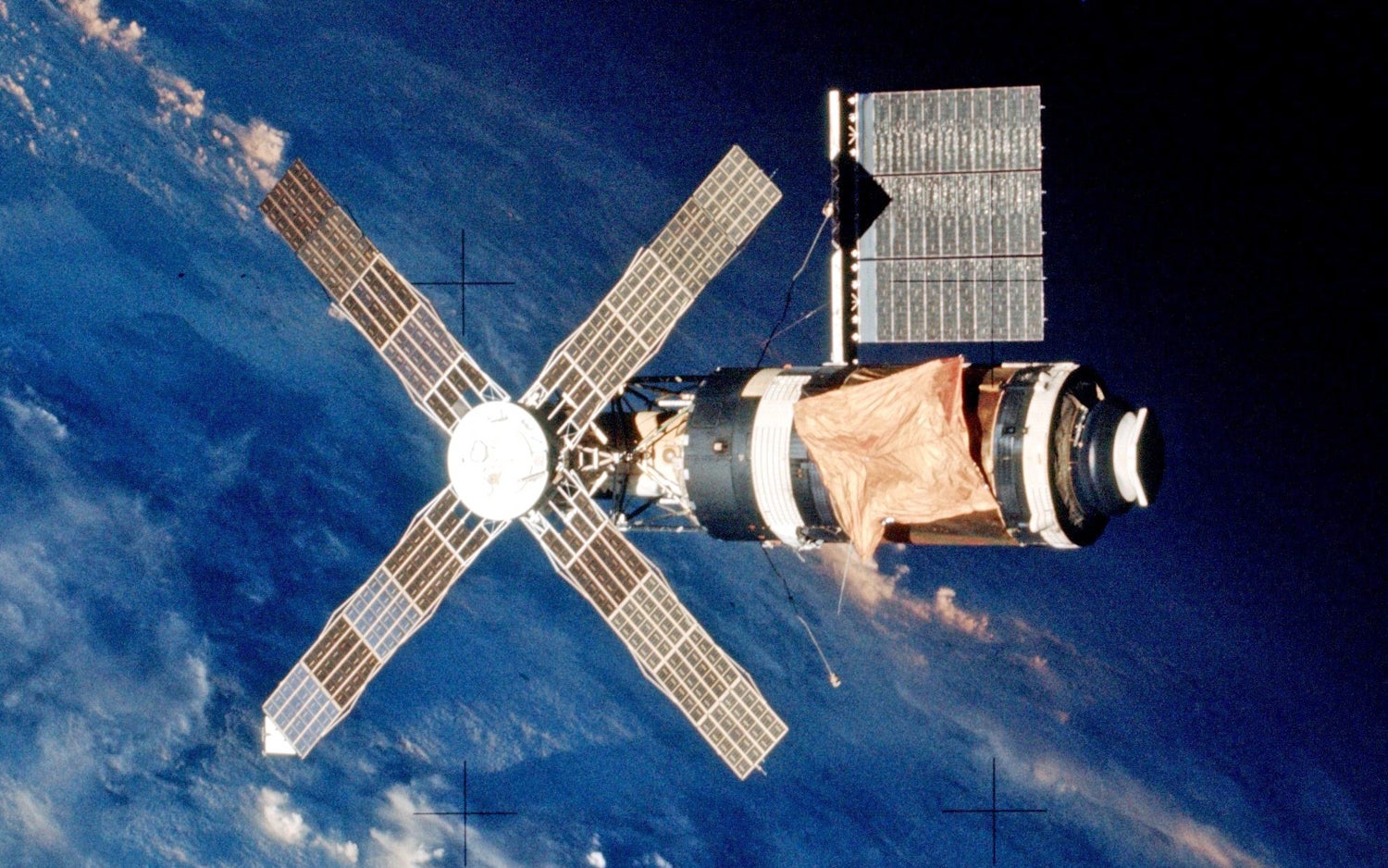
May 14, 1973 – The launch of Skylab, the United States’ first orbiting space station. Skylab was launched into Earth orbit atop a modified, unmanned Saturn V rocket and, after deploying, orbited the planet for six years. During that time, three manned missions were sent to the station, where the crews performed scientific experiments and made observations of the Earth and Sun. NASA originally intended to use the Space Shuttle, under development at the time, to boost Skylab to a higher orbit, refurbish it, and expand it to accommodate 6 to 8 astronauts, thus extending Skylab’s mission for an additional five years. However, delays in the Shuttle program made that impossible, and Skylab re-entered the atmosphere and disintegrated over the Pacific Ocean and western Australia in 1979.
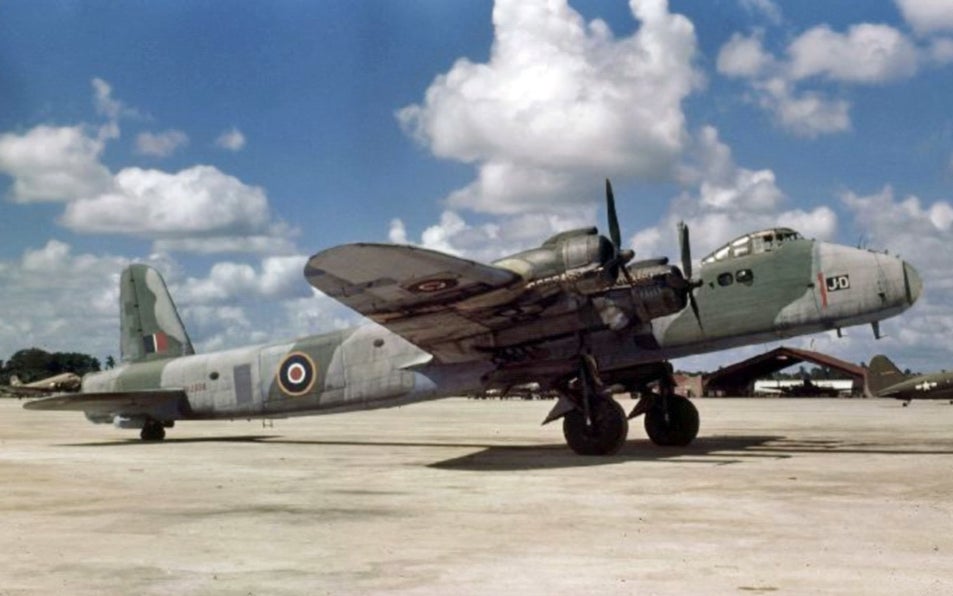
May 14, 1939 – The first flight of the Short Stirling heavy bomber.
In the lead up to WWII, the Allies and the Germans went in different directions on the theory of aerial bombardment. While the Luftwaffe favored medium bombers, the Allies opted for heavy bombers. Entering service in 1941, the Stirling was the first four-engine heavy bomber of WWII and was capable of carrying an enormous 14,000 lb bomb load. It was also larger than both the
!!!error: Indecipherable SUB-paragraph formatting!!!
and the
!!!error: Indecipherable SUB-paragraph formatting!!!
, the bombers that were designed to replace it. However, both of those aircraft began life as twin-engine aircraft, while the Stirling was meant to have four engines from its conception. The Stirling’s service life was relatively short, and it was withdrawn from frontline duties in 1943. The Stirling was then used primarily for mine laying, and also played a significant role in the D-Day invasion as a glider tug.
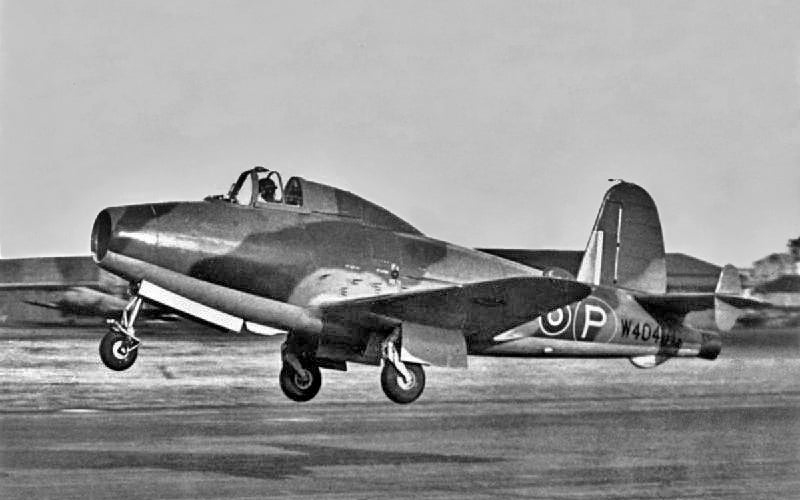
May 15, 1941 – The first flight of the Gloster E.28/39, the first British jet-powered aircraft.
One of the most far-reaching technologies to emerge from the Second World War was the jet engine. The British engineer
!!!error: Indecipherable SUB-paragraph formatting!!!
is credited with the invention of the turbojet engine, though credit for the first operational jet engine goes to Germany’s
!!!error: Indecipherable SUB-paragraph formatting!!!
. In September of 1939, Gloster received a specification from the Air Ministry to construct an airplane that could test one of Whittle’s new engines in flight. The result was the Gloster E.28/39 (the unwieldy name comes from the aircraft’s conforming to the 28th specification in the year 1939), and two prototypes were ordered in February of 1940. Testing was successful, and paved the way for the
!!!error: Indecipherable SUB-paragraph formatting!!!
, the first British jet fighter and the first operational Allied jet aircraft of the war.
!!! UNKNOWN HEADER TYPE (MULTI-LINE BREAK?) !!!
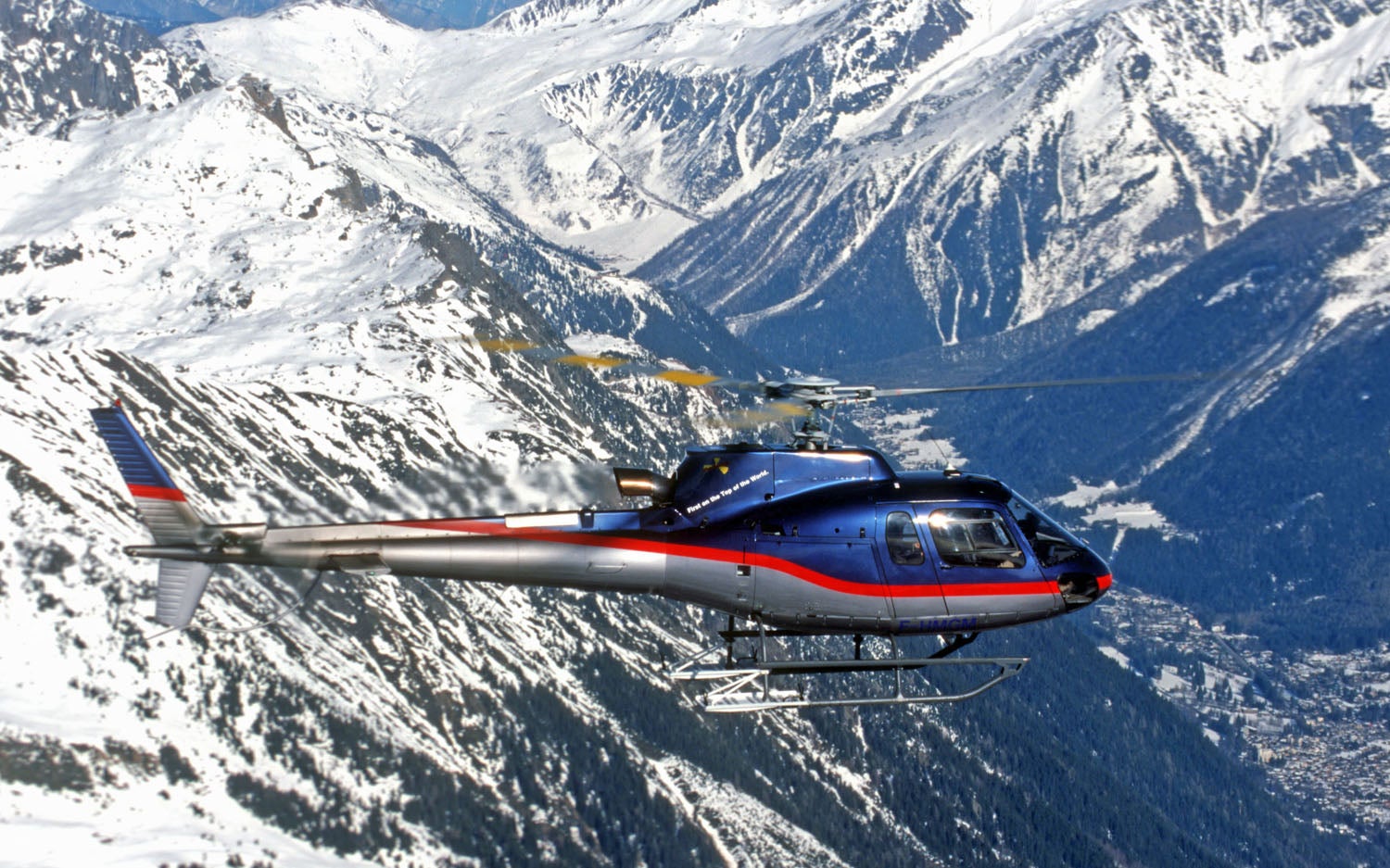
May 14, 2005 – Test pilot Didier Delsalle lands a Eurocopter AS350 helicopter on the summit of Mt. Everest , touching down at an elevation 29,030 ft. (Photo by Jérôme Deulin, Eurocopter )
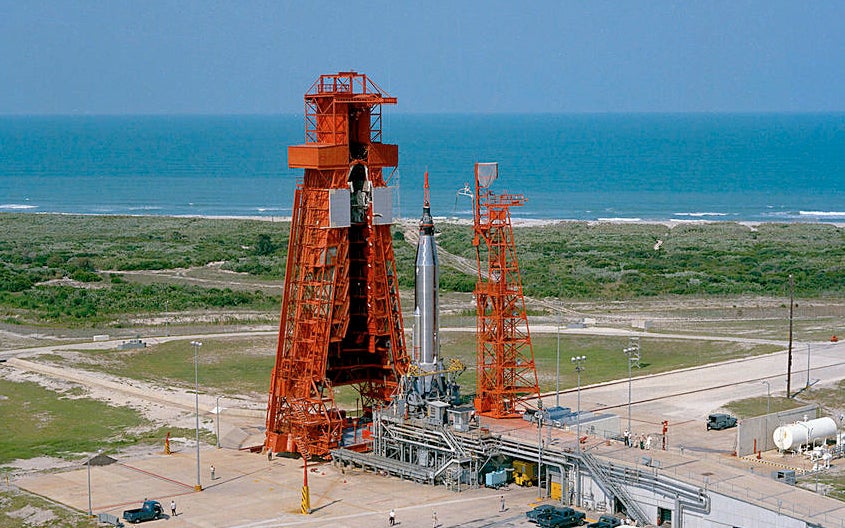
May 15, 1963 – The launch of Mercury-Atlas 9, the final manned mission of the US Mercury project, carrying astronaut Gordon Cooper into space aboard the Faith 7 capsule and completing 22 orbits of the Earth.
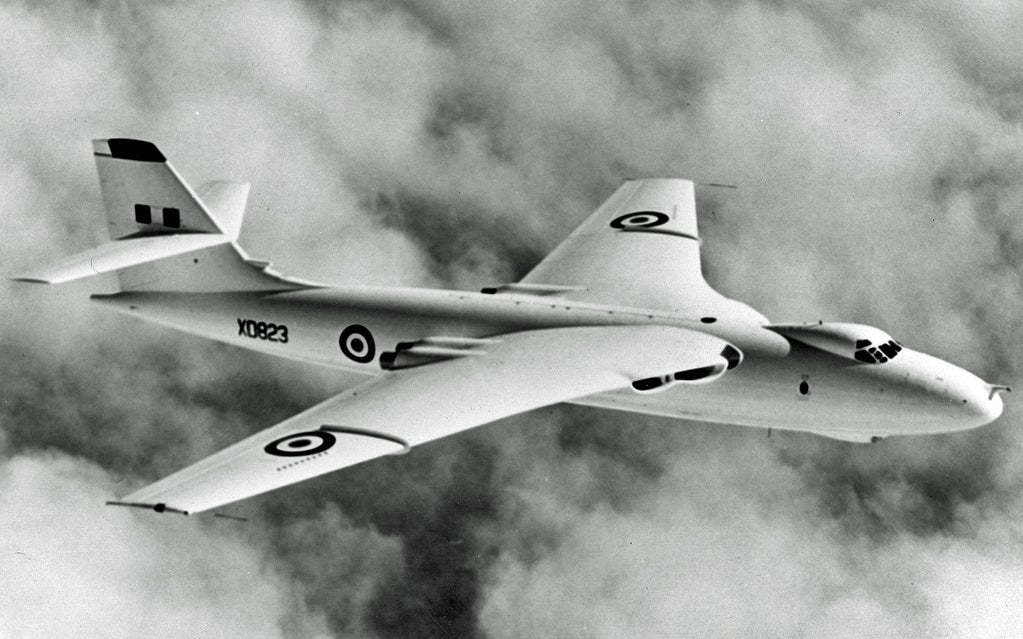
May 15, 1957 – A Royal Air Force Vickers Valiant drops the first British hydrogen bomb over the Pacific. The resulting explosion was less than a third of the maximum expected, and the test was deemed a failure, though the program continued to eventual success.
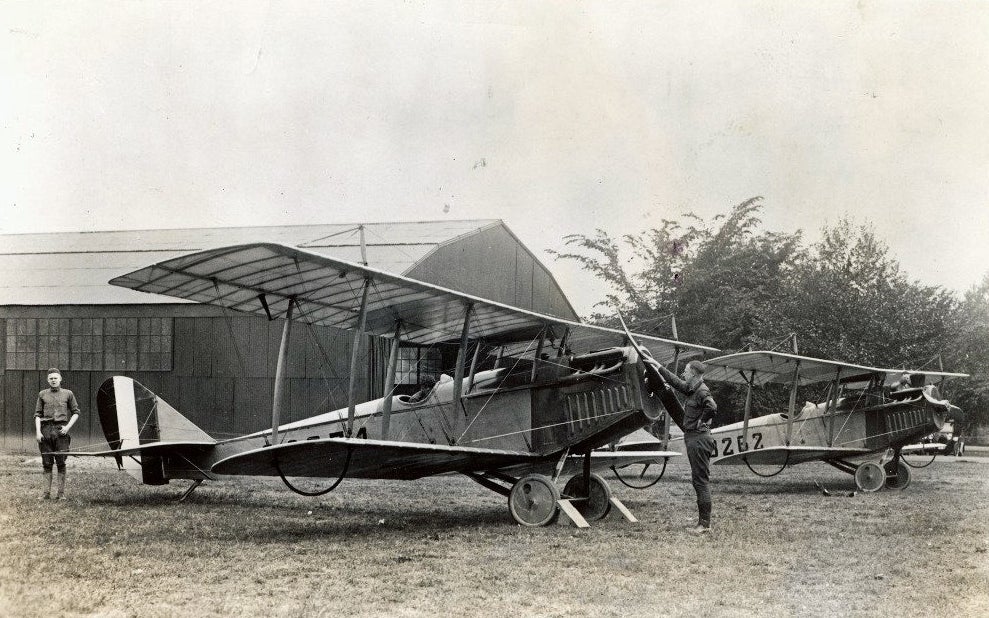
May 15, 1918 – The first regular US airmail service begins,
but gets off to a less than auspicious start as Lt. Geoffrey Boyle, flying a Curtiss JN-4H “Jenny,” gets lost and damages his aircraft while landing to ask for directions. The first load of airmail ended up being delivered by truck.
 Dukie - Jalopnik Emergency Management Asshole
> ttyymmnn
Dukie - Jalopnik Emergency Management Asshole
> ttyymmnn
05/15/2015 at 10:10 |
|
It’s really sad how Buran ended up, crushed by the hanger ceiling it was housed in.
 ttyymmnn
> Dukie - Jalopnik Emergency Management Asshole
ttyymmnn
> Dukie - Jalopnik Emergency Management Asshole
05/15/2015 at 10:14 |
|
I understand that the collapse was largely due to poor maintenance, which is unfortunately typical.
 Jayhawk Jake
> ttyymmnn
Jayhawk Jake
> ttyymmnn
05/15/2015 at 10:27 |
|
I once heard an interesting story about the Pioneer.
I can’t remember the context so don’t quote me.
Story goes the U.S. was working on a turbine engine but couldn’t get it to work properly. It would guzzle fuel so quickly that it was nothing more than a static test article with no hope of flight. Supposedly the U.S. asked Great Britain if they had anyone who could help and they said ‘sure, we’re working on one. Come over and see it for yourselves’
So some U.S. engineers went to the UK and met with Gloster engineers and asked to see the engine. The Gloster engineers took them outside and said ‘great, we’re about to take another flight’. The U.S. engineers were stunned, they couldn't get the engine to run for more than a few minutes and the whole time the British were flying a jet powered airplane!
 Racescort666
> ttyymmnn
Racescort666
> ttyymmnn
05/15/2015 at 11:00 |
|
Strange irony, I was looking up the Buran last night. I was trying to find a decent picture that showed the CCCP markings on it.
 ttyymmnn
> Racescort666
ttyymmnn
> Racescort666
05/15/2015 at 11:05 |
|
Did you find one?
 You can tell a Finn but you can't tell him much
> ttyymmnn
You can tell a Finn but you can't tell him much
> ttyymmnn
05/15/2015 at 15:58 |
|
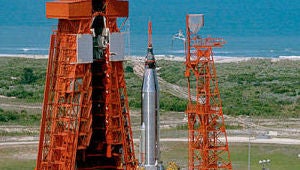
I like the aluminum rocket. It seems that it would gain a little bit of payload if they left rockets unpainted. Corrosion must be an issue, as it seems the cost to lift a pound of payload to orbit would result in more unpainted rockets if they could get away with it.
 You can tell a Finn but you can't tell him much
> ttyymmnn
You can tell a Finn but you can't tell him much
> ttyymmnn
05/15/2015 at 16:04 |
|
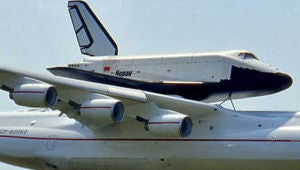
At first glance I thought this was the Space Shuttle and wondered why the plane looked a little off. Once I realized it was Buran riding on the AN-225 it made a lot more sense.
Then I looked into the VM-T that you say was used before the AN-225. That is truly an unfortunate looking airplane. The landing gear arrangement looks like an off road version of the U-2’s.
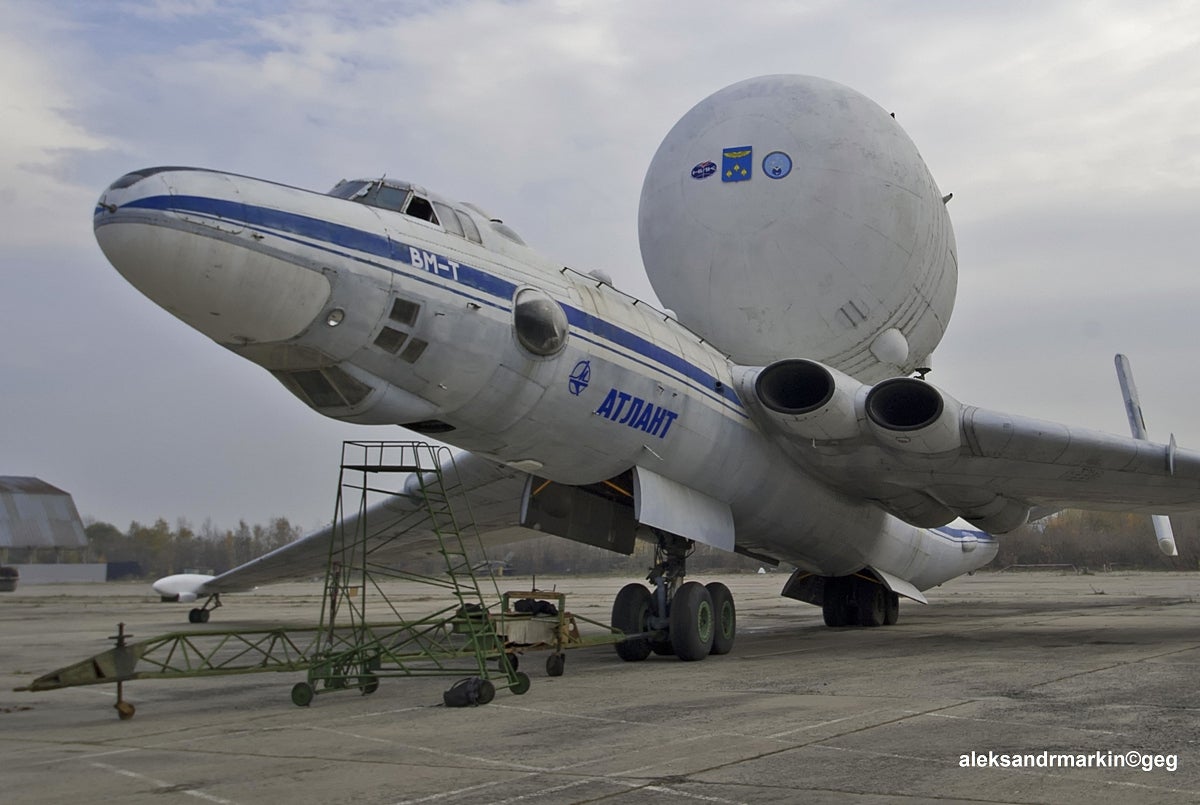
 ttyymmnn
> You can tell a Finn but you can't tell him much
ttyymmnn
> You can tell a Finn but you can't tell him much
05/15/2015 at 16:23 |
|
Russia has never been known for making particularly attractive airplanes (with some notable modern exceptions). Utilitarian, and quite functional, as is their wont, but not often the prettiest things in the air. The
Atlant
was a variant of the Myasishchev M-4 bomber that first flew in 1953, and its design really hearkens back to that era, especially with the extremely narrow fuselage and engines buried in the wing roots. Wild plane. I’d love to see one in the air.
 ttyymmnn
> You can tell a Finn but you can't tell him much
ttyymmnn
> You can tell a Finn but you can't tell him much
05/15/2015 at 16:25 |
|
Weight was the prime reason that they stopped paining the external fuel tanks on the Space Shuttle. White is pretty, but unnecessary. I think the silver rocket is sexy. But since the whole thing is expendable, and wouldn’t be sitting outside in the rain, corrosion probably wasn’t much of a concert. But that’s just a guess.
 user314
> ttyymmnn
user314
> ttyymmnn
05/16/2015 at 15:19 |
|
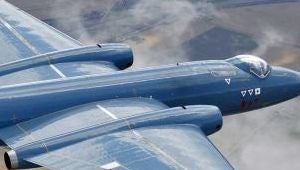
And 65 years later, NASA (
cough
) is still flying a variant of the Canberra. Seriously good designs are timeless.
 ttyymmnn
> user314
ttyymmnn
> user314
05/16/2015 at 17:53 |
|
Yup. Just can’t include ALL the info. It’s a great design, no doubt.
 ttyymmnn
> Jayhawk Jake
ttyymmnn
> Jayhawk Jake
05/19/2015 at 16:48 |
|
That story may not be true (though it probably is), but it’s awesome nonetheless.
 SalsaShark
> ttyymmnn
SalsaShark
> ttyymmnn
05/26/2015 at 19:01 |
|
Yeah, the rust color of the Shuttle’s ET was primer, wasn’t it? I thought that was left on for corrosion-protection...?
 ttyymmnn
> SalsaShark
ttyymmnn
> SalsaShark
05/26/2015 at 19:06 |
|
I think that the shuttle tank was coated with some sort of insulating foam. I seem to remember one instance with a woodpecker was pecking holes in it on the launch pad. They realized that they could save a significant amount of weight by not painting it.
http://science.ksc.nasa.gov/shuttle/missio…
http://articles.latimes.com/1995-06-03/new…